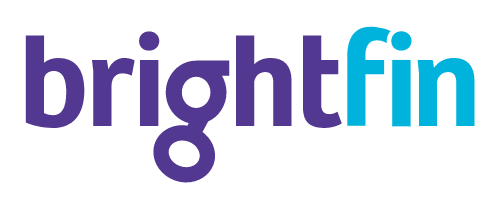Description

ExpenseIn

Spenza
Comprehensive Overview: ExpenseIn vs Spenza
ExpenseIn and Spenza are two distinct platforms that cater to financial management and expense tracking. Below is a comprehensive overview of each, along with a comparison:
ExpenseIn
a) Primary Functions and Target Markets
- Primary Functions:
- ExpenseIn provides tools for expense management, enabling businesses to streamline the process of recording, approving, and reimbursing employee expenses. It includes features such as receipt scanning, reporting, analytics, and integration with accounting software.
- Target Markets:
- ExpenseIn primarily targets small to medium-sized businesses (SMBs) and enterprises that require efficient management of employee expenses. It serves industries such as finance, consulting, technology, and any sector with a significant volume of business travel and expenses.
b) Market Share and User Base
- Market Share:
- ExpenseIn operates predominantly in the European market, especially within the UK. Its market share is smaller compared to larger global players in the expense management space.
- User Base:
- The platform is favored by organizations looking for a straightforward, user-friendly solution with robust customer support.
c) Key Differentiating Factors
- Ease of Use:
- ExpenseIn is known for its intuitive interface and simplicity, which appeals to users who want a straightforward solution without extensive setup.
- Regional Focus:
- A strong focus on the UK and European compliance requirements helps ExpenseIn stay relevant to its primary user base.
- Integration Capabilities:
- Integrates seamlessly with popular accounting software, which is vital for SMBs looking for integrated solutions.
Spenza
a) Primary Functions and Target Markets
- Primary Functions:
- Spenza is a more comprehensive spend management platform focusing on telecom and IT expense management. Its functions include managing billing, contracts, orders, and providing analytical insights to optimize spending.
- Target Markets:
- Targeted at mid to large enterprises, especially those with high telecom and IT expenditures. This includes sectors like telecommunications, IT services, and large corporations with an extensive IT infrastructure.
b) Market Share and User Base
- Market Share:
- Spenza holds a distinctive market position in the telecom and IT expense management niche. The market is competitive, with several specialized tools and platforms.
- User Base:
- Typically used by larger organizations that require detailed oversight of telecom and IT-related expenses. Their user base includes IT departments and financial teams focused on optimizing technology expenditure.
c) Key Differentiating Factors
- Specialization:
- Spenza's specialization in telecom and IT expense management differentiates it from more general expense management platforms.
- Advanced Analytics:
- Offers advanced analytics and reporting capabilities that help large organizations identify cost-saving opportunities within their IT and telecom expenditures.
- Deployment and Scalability:
- Designed for scalability and can handle complex, large-scale deployments that are often required by enterprise clients.
Comparison
- Functionality: While both platforms target expense management, ExpenseIn provides a broader employee expense management solution, whereas Spenza is specialized in telecom and IT expenses.
- Target Audience: ExpenseIn is better suited for small to medium businesses, whereas Spenza targets large enterprises with specific IT and telecom expenses.
- Market Presence: ExpenseIn has a stronger regional presence in Europe, while Spenza is more niche but globally relevant in its specific market.
Each platform is tailored to meet the needs of its respective audience, emphasizing the importance of selecting a product based on organizational size, industry needs, and expense management focus.
Contact Info

Year founded :
2015
+44 333 414 1808
Not Available
United Kingdom
http://www.linkedin.com/company/expensein

Year founded :
Not Available
Not Available
Not Available
Not Available
http://www.linkedin.com/company/isimplexity
Feature Similarity Breakdown: ExpenseIn, Spenza
To provide a feature similarity breakdown for ExpenseIn and Spenza, let's examine the core features, user interfaces, and any unique attributes that differentiate them:
a) Core Features in Common
-
Expense Tracking:
- Both platforms offer robust expense tracking capabilities, allowing users to log, categorize, and manage expenses efficiently.
-
Receipt Capture:
- ExpenseIn and Spenza support receipt capture through mobile apps, enabling users to scan, upload, and attach receipts to their expenses.
-
Reporting and Analytics:
- Both provide financial reporting and insights, helping users to analyze spending patterns and optimize financial management.
-
Policy Compliance:
- Each platform offers features to ensure expenses align with company policies, including setting spending limits and flagging non-compliant expenses.
-
Multi-Currency Support:
- Both services support multi-currency transactions, which is crucial for businesses operating internationally.
-
Integrations:
- They typically integrate with popular accounting and enterprise resource planning (ERP) systems to streamline data flow.
b) User Interface Comparison
- ExpenseIn:
- Known for its intuitive and user-friendly interface, ExpenseIn offers a straightforward navigation experience. The design focuses on clarity, with a dashboard displaying key metrics and quick access to essential features.
- Spenza:
- Spenza also provides a clean and modern interface, tailored to improve user interaction through customizable dashboards. It often emphasizes a more engaging visual appeal with interactive charts and graphs.
c) Unique Features
-
ExpenseIn:
- Custom Approval Workflows: ExpenseIn offers highly customizable approval workflows, allowing organizations to tailor the approval process to their specific needs.
- Offline Mode: Users can record expenses without an internet connection, which are then uploaded once connectivity is restored.
-
Spenza:
- Intelligent Expense Categorization: Spenza stands out with advanced AI-driven capabilities for automatic expense categorization, reducing manual input.
- Vendor Management: It includes features for managing vendor relationships and payments, integrating expense management more tightly with procurement processes.
Understanding these similarities and differences can help organizations choose the solution that best fits their requirements, balancing usability with unique features that add value to their specific business context.
Features

Not Available

Not Available
Best Fit Use Cases: ExpenseIn, Spenza
ExpenseIn and Spenza are both financial management tools, but they cater to different needs and types of businesses based on their features and capabilities. Here’s an overview of the best fit use cases for each:
ExpenseIn
a) For what types of businesses or projects is ExpenseIn the best choice?
-
Small to Medium Enterprises (SMEs): ExpenseIn is ideal for SMEs that require a straightforward and user-friendly solution for expense management. Its intuitive interface and easy setup make it a great choice for businesses that don’t have dedicated finance teams but need to manage and monitor expenses effectively.
-
Project-Based Businesses: Companies that run multiple projects simultaneously can benefit from ExpenseIn’s project tracking features. It allows businesses to allocate expenses accurately to various projects, making it easier to track project-specific spending.
-
Remote Teams: With mobile accessibility, ExpenseIn supports remote teams in logging expenses on the go. This feature is valuable for businesses with employees who travel or work offsite frequently.
-
Industries with Frequent Expense Claims: Sectors like consulting, marketing, and sales, where employees regularly incur travel and entertainment costs, can leverage ExpenseIn for streamlined expense claims and approvals.
d) How does ExpenseIn cater to different industry verticals or company sizes?
ExpenseIn caters primarily to small and medium businesses across various industries with features like multi-currency support, receipt scanning, and customizable policies. It scales well for growing companies by offering tiered pricing plans that expand in functionality as a business increases in size. This flexibility makes it appealing across different sectors where ease of use and cost-efficiency are priorities.
Spenza
b) In what scenarios would Spenza be the preferred option?
-
Large Enterprises: Spenza is designed to handle the complexities of larger organizations. It offers comprehensive spend management capabilities that integrate with existing enterprise resource planning (ERP) systems, making it suitable for large enterprises with complex financial infrastructures.
-
Global Operations: With features that support multinational operations, such as multi-currency and compliance with international financial regulations, Spenza is a go-to solution for companies with a global presence.
-
Organizations Needing Vendor Management: Spenza provides robust vendor management tools, allowing companies to manage and optimize supplier relationships and spending across various departments or branches.
-
Businesses Focused on Cost-Control and Optimization: For organizations looking to gain deeper insights into their spending patterns and achieve cost savings through detailed analytics and reporting, Spenza’s advanced analytics capabilities are a major draw.
d) How does Spenza cater to different industry verticals or company sizes?
Spenza is tailored for large enterprises across industries such as manufacturing, logistics, retail, and finance, which require detailed spend analysis and reporting. It offers custom integrations and flexibility that allow it to adapt to specific industry needs, such as compliance standards and internal process requirements. The scalability of its features caters to both mid-size companies poised for expansion and large corporations with extensive financial oversight needs. Its ability to handle high transaction volumes and complex workflows makes it particularly suited to sectors with heavy operational expenses.
Pricing

Pricing Not Available

Pricing Not Available
Metrics History
Metrics History
Comparing undefined across companies
Conclusion & Final Verdict: ExpenseIn vs Spenza
To provide a comprehensive conclusion and final verdict on ExpenseIn versus Spenza, let's break down the comparison into the specified points:
a) Considering all factors, which product offers the best overall value?
Best Overall Value: ExpenseIn
While both ExpenseIn and Spenza have their merits, ExpenseIn slightly edges out as offering the best overall value, particularly for small to medium-sized companies seeking a straightforward yet robust expense management solution. ExpenseIn’s competitive pricing, ease of use, and comprehensive features cater well to businesses looking for an efficient way to manage expenses without incurring extensive overhead costs.
b) Pros and Cons of Choosing Each Product
ExpenseIn
Pros:
- User-Friendly Interface: ExpenseIn is designed with simplicity in mind, making it easy for users to quickly adapt and manage their expenses with minimal training.
- Competitive Pricing: Its pricing plans are generally more affordable, especially appealing to small and medium enterprises.
- Comprehensive Features: Offers features like receipt scanning, real-time reporting, and comprehensive expense policies that help streamline expense management.
- Solid Customer Support: Users often rate the support team positively, highlighting prompt and effective assistance.
Cons:
- Limited Customization: May not offer the same level of customization as some high-end solutions, which could be a limitation for larger corporations with unique processes.
- Scalability Concerns: While excellent for smaller businesses, extremely large-scale operations might find the platform less scalable.
Spenza
Pros:
- Flexibility and Customization: Highly customizable, which can be advantageous for larger businesses with specific requirements.
- Integration Capabilities: Offers strong integration options with various other business tools, enhancing its usefulness in larger, more interconnected environments.
- Advanced Analytics: Provides advanced analytics and reporting tools, which can deliver more in-depth business insights.
Cons:
- Higher Cost: Usually comes with a higher price tag, which might be a consideration for cost-sensitive users.
- Complexity: Its advanced features come with a steeper learning curve, potentially requiring more time for users to fully utilize the platform.
c) Specific Recommendations for Users Trying to Decide Between ExpenseIn vs Spenza
-
Assess Business Size and Needs: Small to medium enterprises would greatly benefit from ExpenseIn due to its simplicity and cost-effectiveness. In contrast, larger companies with complex needs might prefer Spenza for its flexibility and integration capabilities.
-
Budget Considerations: If budget constraints are a primary concern, ExpenseIn is likely the better choice due to its lower cost without sacrificing core functionality.
-
Feature Requirements: If your business requires extensive reporting, advanced analytics, and a high level of customization/integration, Spenza might be worth the investment despite its higher cost.
-
Trial Periods: Take advantage of any available trial periods or demos to test both systems within your company’s workflow; experiencing the user interface and features firsthand can clarify which solutions align best with your operational needs.
Ultimately, the choice between ExpenseIn and Spenza should come down to specific business needs, budget limitations, and desired features. Companies should evaluate internal requirements and goals to determine which platform aligns best with their expectations and financial capabilities.
Add to compare
Add similar companies



